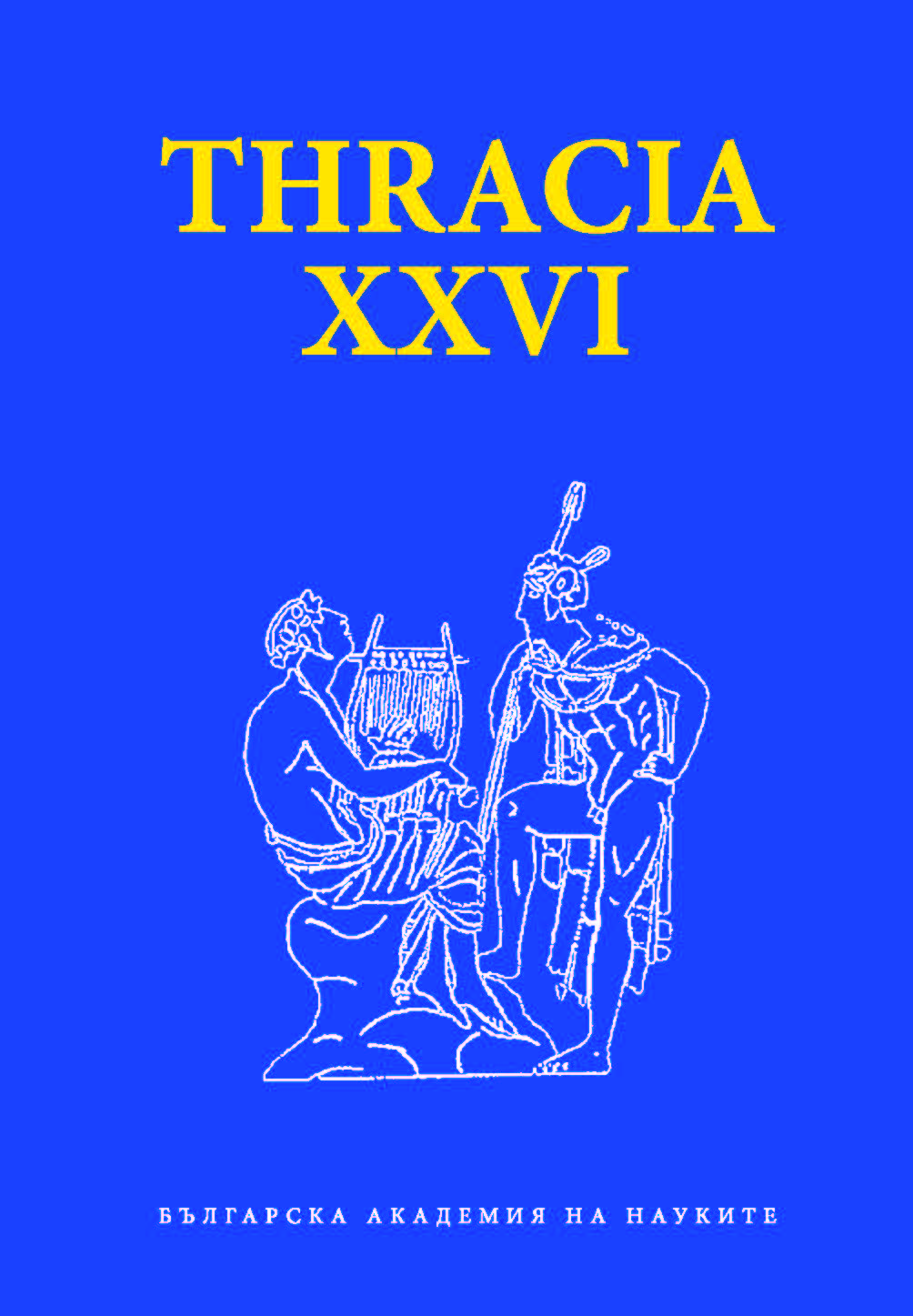ЗА БРОНЗА НА АДЕЙ – СИН НА МАКЕДОНА КОРАГОС И ГЕНЕРАЛ НА СЕЛЕВКИДА АНТИОХ ІІ, ОТКРИТ НА ТЕРИТОРИЯТА НА УКРЕПЕНОТО ТРАКИЙСКО СЕЛИЩЕ, НАРИЧАНО ТАСОСКИ ЕМПОРИОН ПИСТИРОС.
ON THE BRONZE COIN OF ADAIOS – SON OF THE MACEDONIAN KORRAGOS AND GENERAL OF THE SELEUCIDE KING ANTIOCHOS II, FOUND ON THE TERRITORY OF THE FORTIFIED THRACIAN SETTLEMENT CALLED THASIAN EMPORION PISTIROS
Author(s): Boryana RussevaSubject(s): History, Anthropology, Social Sciences, Archaeology, Customs / Folklore, Comparative history, Ethnohistory, Ancient World, Cultural Anthropology / Ethnology, Culture and social structure
Published by: Институт за балканистика с Център по тракология - Българска академия на науките
Keywords: bronze coin; Adaios; Thasian Emporion Pistiros; Cypsella; of Hellenistic Thrace;
Summary/Abstract: The depot of the Museum of Archaeology in the town of Septemvri houses the entire coin array of numismatic pieces discovered during the regular archeological excavations on the territory of the fortified Thracian settlement near Vetren village, better known as Thasian Emporion Pistiros. An interesting bronze coin (Inv. No 1.172–1990) of the types head of young Heracles//horizontal club (Fig. 1) comes among all the coin finds. The piece is highly corroded, with rather damaged surface, depersonalized legend and emission marks. However, in its coin types, as well as in its size and weight (4.70 g; 18x15 mm), the coin is identical to the bronze coins, which the Macedonian Adaios, named by Selene Psoma as viceroy of Antiochos IITheos in Thrace, minted in 253–243 BC in Cypsella – his capital and one of his mints on the territory of Southeastern Thrace. Based on Selene Psoma’s interpretation of the so-called sitarchiai and sitérésia, i.e.the daily payments with bronze coins to soldiers from garrisons stationed in Hellenistic Thrace, we can conclude that coins from the “military issues” of at least three Hellenistic rulers have been found on the territory of the “Thasian emporion Pistiros”. First was SeleucusI with his three bronze emissions, struck in the capitals of Antioch and Sardis (Figs. 7–9and Fig. 2), which came to Thrace with Seleucus’ military treasury, appropriated by PtolemyKeraunos after the assassination of Nicator near Lysimacheia. Seleucus’ bronze was followedБоряна Русева291chronologically by the tetradrachm of the Dynast Skostokos (Fig. 10 and Fig. 3) – a piece of anemission minted in the 270s BC in Enos under force majeure, most likely for the payment ofsoldiers hired by Skostokos to defend the city against the Celtic invasion of 281 BC onwards. Apropos, contemporary to Skostokos’ tetradrachm is the group of posthumous Alexanderdrachms from the Vetren treasure – all signed with the common control sign – the verticaltorch under the divine throne (Pistiros h. 22–25 from Price 564A). The coins are perfectly preserved, i.e. without visible signs of circulation. The researchers attribute them to the capital’ s atelier in Pella, which issued them as soon as Antigonus Gonatas proclaimed himself King of Macedonia (276).Therefore, the latest coin discovered so far on the territory of the Vetren fortified settlement is the bronze one of the Seleucid general Adaios, minted in Cypsella, in the period between 253 and 243 BC – a piece of a “military issue” intended to cover the daily financial needs of the mercenaries of the Macedonian garrison stationed in the Adaios’ capital ofCypsella. I remain hopeful that at the archeological site of Adzhiyska Vodenitsa will soon be discover a bronze coin of Antiochus II as well – the ruler who appointed Macedonian Adaiosas his general in Thrace. Thus, the Thracian settlement in the lowland of Upper Maritsa River, located not far away from the Roman road station of Bona Mansio, will be among other settlements of the age – Maroneia and Knyazhevo, Kabyle, Seuthopolis and Arkovna, on whose territory the bronze editions of Adaios and Antiochos Theos have been discovered – a material sign of the turbulent years of a still another clash between the two great Hellenistic states – the Seleucid and Lagid ones, which marked the history of Hellenistic Thrace in the mid third century BC.
Journal: Thracia
- Issue Year: 2022
- Issue No: 26
- Page Range: 277-290
- Page Count: 14
- Language: Bulgarian
- Content File-PDF

